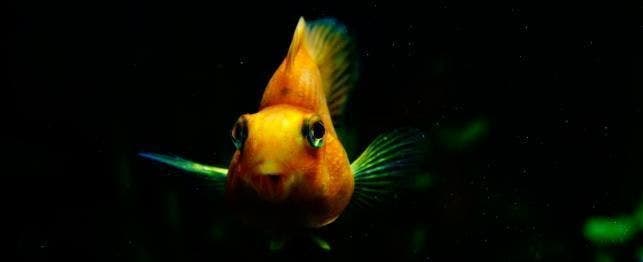
How to Keep Algae in Check
Before the biological processes that happen in an aquarium were understood, perfectly clean aquariums were thought to be most healthy. However, now we know that a certain amount of algal growth in your tank is a good sign. Algae help process nitrates, the end-product of the bacterial processing that rids the water of dangerous fish waste products, although in a closed system, they alone are not adequate in maintaining acceptable nitrate-levels. (The only other known way to decrease nitrates safely is by water exchange.)
Planting macroalgae in your tank cuts down on the percentage of water you must exchange, and they can add a natural decorative element to your aquarium. Several kinds are appropriate for aquaria, such as Caulerpa, Penicillus, Udotea and Halimeda. The latter three are calcareous algae and slow-growers, but, if they proliferate, you know the calcium levels in your tank are good.
Be aware that some algae, like Caulerpa, require a higher amount of trace elements than normally present in your tank. You will need to add these. They are readily available in most aquarium supply stores. But Caulerpa are the easiest to keep and grow very quickly in an aquarium. Once they’ve gotten established, they will probably need some weeding out. When you first introduce your macroalgae, they should receive continuous light for 48 hours to help them establish in their new surroundings. But you don’t need to seek out macroalgae to have a healthy system.
Green Is Good, Brown is Bad
A healthy growth of green algae in an established aquarium will happen naturally and is a sign of good water quality and adequate lighting; however, red or brown algae indicate poor water-quality and low-light conditions. After a tank is running for about a week, you may notice a brownish color beginning to take over on rocks and substrate. Don’t worry about this. The brown comes from a growth of diatoms, microscopic plants that require little light and are tolerant of many water conditions. But, if you have properly conditioned your tank and are providing at least 8 to 10 hours of adequate light daily, you’ll soon notice that brilliant green algae begin to take hold.
But what to do when algae look like they are taking over? Certain factors, like an accumulation of phosphate, too much light and the absence of herbivores may allow algae to get out of hand. Microscopic algae that appear as greenish “films” on glass are easily cleaned with a rag, or controlled by herbivorous species. Snails are often thrown into a tank to thwart any overgrowth, which usually works well. However, watch out that you don’t end up having a snail problem since many of these species are astoundingly prolific.
Avoid These Bad Algae
Since algae are introduced mainly with fish and live rocks, sometimes the wrong algae can get into your tank as well. Overgrowth of filamentous algae, which look “hairy,” can be harmful and should be removed by hand as much as possible to prevent take-over. Look out for these troublemakers in particular:
- Bryopsis. It is dark green and has feather-like tufts growing from its tips. It prefers growing on hard surfaces and is usually found clinging to the tank sides or on rocks. Once it takes hold, it’s difficult to get rid of because not too many herbivorous fish or invertebrates will eat it. Try your best to pull out as much as you can, as often as you can.
- Cladophora. This algae is also dark green, but grows in thick tufts. Tangs and snails will usually graze on this algae.
- Derbesia. Also known as hair algae, derbesia is a common nuisance in aquaria. They grow in thick dense mats and are variable in color, though they are generally a lighter shade of green. They often grow in a bubble-like form. This algae must be tasty because it is easily controlled by herbivorous fish and snails.
- Enteromorpha. This is a filamentous algae and among the first to appear in your aquarium. It is light green in color and looks like tiny tubes. It grows on hard surfaces such as the tank glass or rock and commonly appears and disappears as the aquarium becomes better established. Most herbivorous fish and invertebrates will graze on this algae.